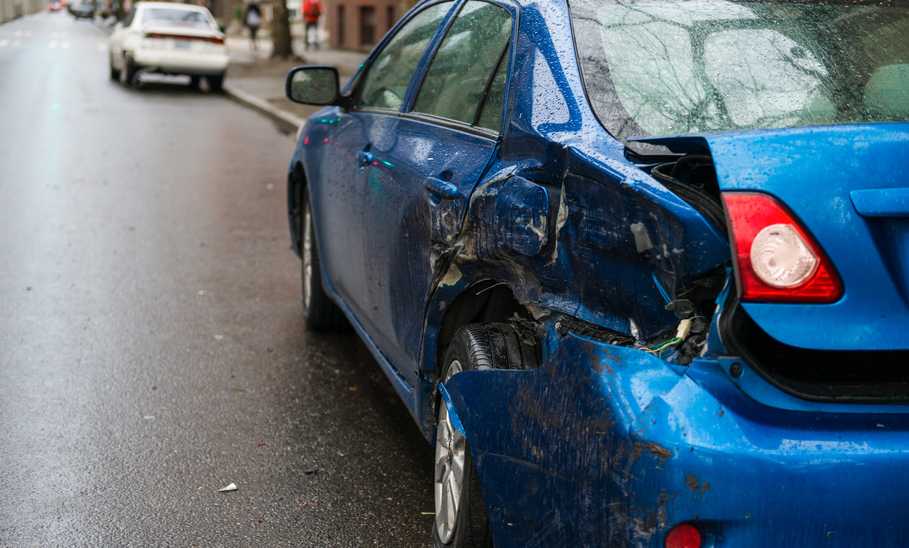What To Do After A Hit And Run Car Accident?

Our evaluations and opinions are not influenced by our advertising relationships, but we may earn a commission from our partners’ links. This content is created by TIME Stamped, under TIME’s direction and produced in accordance with TIME’s editorial guidelines and overseen by TIME’s editorial staff. Learn more about it.
When you’re involved in a collision with another car, you’ll usually work with the other driver to exchange information and make claims on your insurance. But in a hit-and-run accident the at-fault driver leaves the scene before you can identify them. That means you can’t follow the usual steps after a car accident, and the other driver’s insurance won’t cover any damage to your car or injuries to you or your passengers.
A 2021 Insurance Research Council (IRC) study found that 12.6 percent of drivers — that’s one in eight — did not carry insurance in 2019. That makes the likelihood of being involved in a hit-and-run with an uninsured driver higher than you might think. Knowing what to do after a hit-and-run can help prepare you if you ever find yourself in this situation.
First, it’s essential to determine whether you have been in a hit-and-run accident. In general, a hit-and-run is defined as an accident where a driver intentionally leaves the scene without providing their name and insurance information.
A hit-and-run accident typically includes (but is not limited to) the following situations:
If you’re involved in a hit-and-run, you are probably stressed and unsure what to do. Although difficult, the best thing to do is remain calm and follow these steps.
The first thing to do after a hit-and-run is to stop the car in a safe location and assess the damage. If any passengers are in your vehicle, make sure they are OK and address any injuries before proceeding. The most important thing is ensuring you and your passengers are safe and unharmed.
Once you’ve established that everyone is safe, call the police to report the incident. An officer will likely come to the scene of the accident to investigate, and they will then file an accident report. This report is important evidence you can provide your insurer with when you file a claim.
See if anyone in the area witnessed the accident and can give a statement to the police. Note their name and contact information so you can provide it to your insurance company when making a claim in case they have any additional questions. You can also ask any local businesses whether they have security camera footage that shows the incident—this can be used by the police when filing a report and by your insurance company when processing your claim.
Once you’ve filed a police report, it’s time to contact your insurance company. You’ll probably have to give a statement and provide supporting documentation such as photos of the damage, a copy of the police report, and the contact information of any witnesses. Depending on your provider, you may be able to file over the phone, online, or using a mobile app. You may also be able to file your claim in person if you work with a local insurance agent.
Although it’s important to understand what to do if you’re in a hit-and-run accident, knowing what not to do is also essential. Being in an accident is usually very stressful, and if the other car drives away, you might get angry and react without thinking. But no matter what, it’s important not to do any of the following:
Sometimes, an uninsured driver might give you false information rather than fleeing the scene after an accident. This scenario is not considered a hit-and-run, but your insurance will address it in a similar way.
The possibility of being given false information is another reason why it’s so important to document the incident as thoroughly as possible. Ask to see the driver’s license, registration, and insurance card, and take detailed photos of the scene, including the other car’s license plate. Additionally, make sure you call the police immediately after an accident. The police will file a report, which you can provide to your insurance company as proof of what transpired. The report will be an essential part of the claims process if you cannot claim against the other driver’s insurance.
The best insurance companies for auto insurance will offer several types of car insurance coverage that could kick in after a hit-and-run accident. These include collision coverage, uninsured motorist property damage and bodily injury coverage, medical payments coverage, and personal injury protection. This section will explain each type of coverage and how it could come into play after a hit-and-run.
Collision coverage is the primary type of coverage that can help after a hit-and-run accident. This type of coverage is designed to help pay for repairs to your car after an accident, regardless of fault. When you’re involved in a hit-and-run accident, repairs to your vehicle won’t be covered by the at-fault driver’s insurance since they are unknown. Collision coverage will help pay to repair your car up to the policy limits, minus the deductible.
Collision coverage is not required by law in any state, but if you have a car loan, your lender will probably require you to carry it.
Uninsured motorist property damage (UMPD) coverage may cover damage to your car from a hit-and-run, but it will depend on where you live. When you’re in a hit-and-run, most states consider the other driver to be uninsured. Even if the driver does have insurance, you won’t know because they fled the scene. This type of coverage is not available in some states and mandatory in others, so talk to your insurance agent to see whether you need this type of coverage.
Similarly to uninsured motorist property damage (UMBI) coverage, this bodily injury coverage may apply if you are injured in a hit-and-run and, therefore, cannot claim on the other driver’s insurance. UMBI coverage can be helpful if you don’t have health insurance or if your health insurance won’t cover all your medical needs after a hit-and-run accident.
Again, your state of residence will determine whether or not this type of coverage applies to a hit-and-run accident, so it’s a good idea to ask a local insurance agent for advice.
Medical payments coverage can help pay for medical expenses that result from an accident, regardless of fault. This coverage can be helpful if your health insurance is insufficient to cover all your medical payments resulting from the accident—or if you don’t carry health insurance coverage. If you’re injured in a hit-and-run, medical payments coverage can help cover your medical bills, minus your deductible, since you won’t be able to claim on the other driver’s insurance.
Personal injury protection (PIP) coverage is similar to medical payments coverage, but it can also cover things like lost income, long-term care costs, and even funeral expenses if applicable. PIP coverage is required in some states, while it’s not an available option in others.
Your car insurance may cover several items following a hit-and-run accident. The types of coverage that could apply include the following:
Depending on the type of coverage, you may be required to pay a deductible before the insurance begins paying the claim. In some cases, this might make it unwise to file a claim, especially if the damage is minor. For example, if your car door is dented in a parking lot and it will cost $400 to repair, it’s better to pay out of pocket if your deductible is $500.
After a hit-and-run accident, it’s important to file an insurance claim as soon as possible. Most insurance companies have several options for filing a claim. Filing by phone is usually an option, and many insurers also allow you to file a claim online or using a mobile app. If you file online or via an app, you may receive a phone call from an agent to discuss the accident’s details and determine the best way to make an insurance claim.
Ideally, you’ll have several items to submit as proof of the accident, including the following:
The answers to the following common questions about hit-and-run accidents can help you ensure you are prepared for this type of incident should it ever happen to you.
If you are in an accident in New York and leave the scene, you could face criminal charges and receive a sentence of up to 12 months in jail. That sentence could be as long as 7 years if the accident caused serious injury or death.
It might. Some insurance providers won’t penalize policyholders if they make a claim on an accident that was not their fault, while others might. Ask your insurance agent whether your insurer raises premiums if you are to file a claim following a hit-and-run.
The answer to this question depends on the type of coverage you have. Collision coverage and personal injury protection usually have deductibles, while uninsured motorist coverage does not. If you make claims on multiple types of coverage, you may need to pay more than one deductible.
Liability coverage is designed to pay for third-party damages or injuries following an accident for which you are at fault. It will not cover your car if it’s involved in a hit-and-run; you will need to have collision coverage or uninsured motorist property damage coverage for damage to your car.
Collision coverage will usually cover damage caused to a parked car, whether it’s hit by a passing motorist while parked on the street or dinged by a neighboring car while parked in a parking lot.
The answer to this question will depend on your insurer. Some may require you to file a claim on a hit-and-run accident within 24 hours, while others may give additional leeway.
The information presented here is created by TIME Stamped and overseen by TIME editorial staff. To learn more, see our About Us page.



